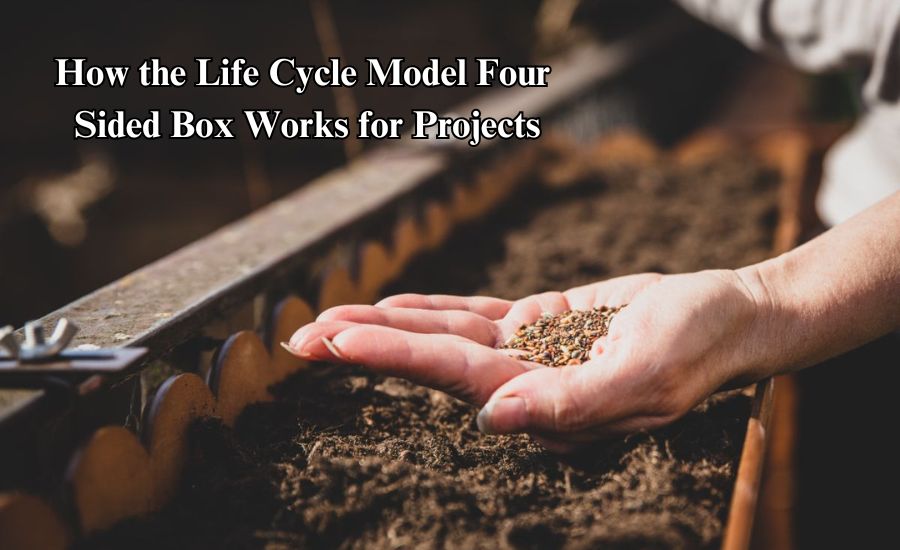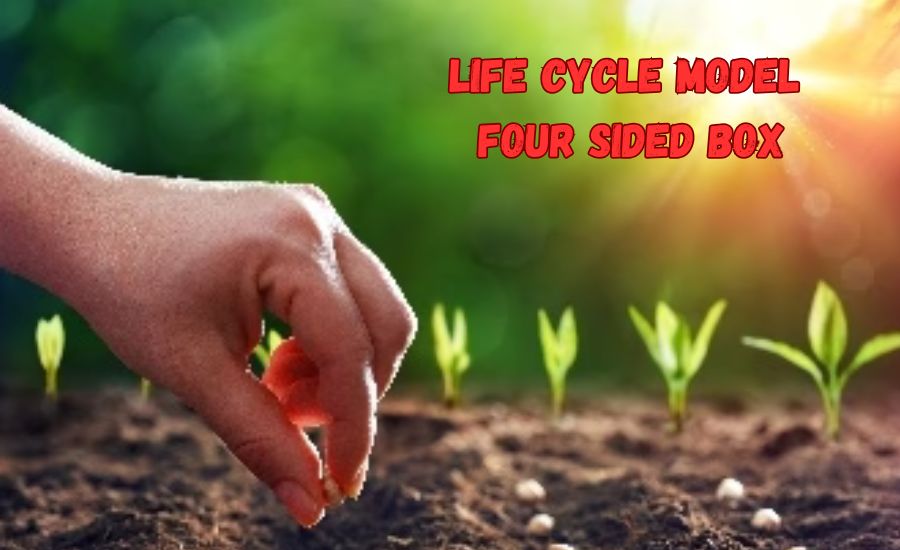Unlocking the Life Cycle Model Four Sided Box: A Powerful Guide for Beginners
The life cycle model four sided box, is an easy way to look at how things change and grow over time. This model helps us understand how something goes through different steps, from beginning to end, and then might start all over again. Whether a project, a plant, or even a story, this model can show us that everything has stages.
In this post, we’ll explore the life cycle model four sided box. We’ll learn about each side of the box and what it represents. By the end, you’ll see how this model can help us understand the world around us!
What Is the Life Cycle Model Four Sided Box?
The life cycle model four sided box is a simple way to understand stages of growth and change. Imagine a box with four sides, where each side represents a different stage of life or a project. This model shows how things start, grow, reach a high point, and sometimes come to an end or restart.
Each side of the box helps us see how something moves through these stages. Whether it’s a plant, a story, or a business, this model allows us to understand what happens in each step. Learning about the life cycle model of a four-sided box can make understanding complex things much more accessible.
This model is beneficial in many areas of life. It’s a handy tool for projects, school, or even to see how nature works. When we look at things using the four-sided box, we see patterns and understand how everything has a beginning, middle, and end.
Why Use the Life Cycle Model Four Sided Box?
Using the life cycle model four sided box can make things simple. This model helps us break down big tasks or ideas into smaller, manageable steps. When we see each stage clearly, it becomes easier to work through and understand what’s coming next.
One reason to use this model is to plan better. Knowing each side of the life cycle model four-sided box, we can see where we are and where we need to go. This can help us avoid mistakes and make better choices in projects or life.
This model is also great for learning. It makes studying or understanding new things more clear. The life cycle model four sided box gives us a better view of how things progress over time.
The First Side: Starting Point in the Life Cycle Model Four Sided Box

The first side of the life cycle model four sided box is about the beginning. This stage is where ideas are formed and where something new starts. It’s like planting a seed that will grow over time.
We might still need to learn about what will happen at this stage. We have an idea or a plan. The first side of the life cycle model is a four-sided box full of hope and new possibilities. It’s a time for exploring and making big plans.
This starting point is critical. The cycle might only go well with a start. In the life cycle model four sided box, a strong beginning helps set things up for success in the following stages.
The Second Side: Growth Stage in the Life Cycle Model Four Sided Box
The second side of the life cycle model four sided box, represents growth. This is the part where ideas or projects start to expand and develop. It’s an exciting stage because things are actively moving forward.
During this growth phase, new things are added, and improvements happen. A project might add new steps or ideas, such as a plant growing leaves. In the life cycle model four sided box, the growth stage is a time for building and making progress.
Growth is also a time of learning. Mistakes might happen, but they help make the project stronger. With each new addition, the life cycle model four sided box keeps moving closer to maturity.
The Third Side: Maturity Stage in the Life Cycle Model Four Sided Box
The third side of the life cycle model four sided box is called maturity. This is the stage where everything has reached its full potential. A project or idea is now stable, and fewer changes are happening.
At this point, things are running smoothly. The life cycle model four-sided box shows us that this is the peak stage, where everything is working well. It’s a time to keep things steady and ensure everything stays successful.
Maturity is a sound stage, but it only lasts for a while. In the life cycle model four sided box, this stage reminds us to enjoy the peak and prepare for what might come next. It’s a time for maintenance and care.
The Fourth Side: Decline or Renewal in the Life Cycle Model Four Sided Box
The fourth side of the life cycle model four sided box which shows us that every cycle must end or restart. This side represents decline or renewal, meaning things either come to an end or are refreshed with new ideas.
When a decline occurs, it might mean the project is finished or needs changes to keep going. This stage of the life cycle model, a four-sided box, helps us see the importance of making updates or deciding to move on.
Sometimes, renewal happens instead of decline. In this case, new energy or ideas bring life back to the project. The life cycle model four-sided box can start all over, bringing fresh possibilities to each stage.
How the Life Cycle Model Four Sided Box Works for Projects

The life cycle model four sided box can be a helpful guide in managing projects. Following each stage of the model allows a project to move forward smoothly and avoid problems. Starting, growing, maturing, and renewing are all steps that help make projects successful.
Each stage of the life cycle model’s four-sided box shows where a project is and what to focus on. Knowing what is needed at each stage helps people work more effectively, and it also keeps the project organized and on track.
For projects, using the life cycle model four-sided box can be a great way to reach goals. By understanding the cycle, teams can plan and handle challenges more easily.
Examples of the Life Cycle Model Four Sided Box in Nature
Nature is full of examples of the life cycle model four-sided box. Think about a plant. It starts as a seed, then grows, matures, and finally reaches an end. This plant cycle shows how the four-sided box model works in natural life.
Animals also follow this model. Many animals go through birth, growth, maturity, and decline stages. The life cycle model, a four-sided box, helps us see how everything in nature has a pattern or a process.
This model can also be seen in seasons. Each season brings changes that repeat year after year. By observing nature, we can better understand the life cycle model four-sided box in the world around us.
Using the Life Cycle Model Four Sided Box in Everyday Life
The life cycle model four sided box can help us understand the stages of our activities. Everything follows a cycle from start to finish, from learning a new hobby to managing chores.
Understanding this model makes it easier to plan daily tasks. We can set goals and know our current stage. For example, if we are learning a skill, we start small, practice, improve, and reach a steady level.
The life cycle model four-sided box can make everyday activities less overwhelming. We can enjoy each part without rushing or worrying too much by breaking things down into stages.
Benefits of Understanding the Life Cycle Model Four Sided Box
Understanding the life cycle model four sided box can be handy in many areas of life. This model helps break down big ideas into smaller, clear steps, making it easier to follow and manage projects or tasks. Knowing each stage means we’re prepared for what’s coming next.
One significant benefit is that it helps us set goals. By knowing where we are in the cycle, we can make better decisions and avoid problems. When we understand the life cycle model four-sided box, we can also improve how we plan things, which saves time and effort.
This model is also helpful in personal growth. It teaches us that everything has stages, which can help us stay patient. Understanding the life cycle model four-sided box can make tasks feel less overwhelming, whether in school, work, or hobbies.
Real Life Scenarios Using the Life Cycle Model Four-Sided Box

The life cycle model four sided box is helpful in many real-life scenarios. For example, starting a garden follows this model. First, we plant seeds, then they grow, mature, and eventually finish their cycle. This model helps us see the stages.
In school, learning new subjects can also follow the four-sided box model. We start by teaching basics, then we build knowledge, reach a stable level, and review at the end. This pattern shows up in many daily tasks and projects.
This model is also helpful for planning events. The four-sided life cycle model box can accommodate starting with ideas, preparing, enjoying the event, and then cleaning up. Using this model in real-life scenarios makes planning and understanding the steps easier.
The Life Cycle Model Four Sided Box in Business Projects
The life cycle model four-sided box in business projects is accommodating for planning. Projects go through a cycle from starting point to growth, maturity, and either ending or restarting. This model helps teams understand each stage and prepare for what’s next.
In the early stage, ideas and plans are created. Then, during growth, teams work hard to build and improve. The project reached its peak at maturity, and everything is running smoothly. Finally, the project may end, or changes may be made to renew it.
Using the life cycle model four-sided box in business projects keeps things organized and helps teams stay on track. Knowing which stage the project is in makes it easier to spot and solve problems, leading to better results.
Move Forward: Understanding-pre-asph-leica-lenses
The Four Sided Box Life Cycle Model in School Projects
The four-sided box life cycle model is a helpful tool for school projects. It starts with planning, where students gather ideas and decide on steps. The growth stage begins when the project work begins, like researching or creating parts.
In the maturity stage, the project is nearly finished. It’s time to add the final touches and review all parts. In the end, students either complete the project or make changes if something needs improvement. Each side of the life cycle model four-sided box has a role in guiding students through these steps.
Using this model in school projects makes the process easier to follow and keeps the project organized. It also teaches students about working in steps, which is helpful in future tasks.
How to Teach Kids About the Life Cycle Model Four-Sided Box
Teaching kids about the life cycle model of a four-sided box can be simple and fun. One way is to show them real-life examples, like the life cycle of a butterfly or the stages of planting a flower. This helps them see how things grow and change.
Kids can also learn this model by applying it to their hobbies or schoolwork. Teachers can explain each stage, from starting an idea, growing it, reaching a final product, and sometimes starting over. Using drawings or crafts can make this model even more transparent.
With the life cycle model four-sided box, kids learn about how everything has a process. They’ll see that it’s okay to take things one step at a time and understand that each part has its importance.
Conclusion
The life cycle model, a four-sided box, is a helpful way to understand how things change and grow over time. This model shows us that everything has stages, from starting to growing, reaching a peak, and sometimes ending or starting again. Knowing these steps can make projects, learning, and even daily life feel more manageable and less confusing.
Using the life cycle model four-sided box, we learn to take things step by step. Whether working on a school project, growing a plant, or even starting a new hobby, this model helps us see each part clearly. It reminds us that change is regular and every stage has a purpose.
Read Next: Dell-cdmj9-amd-radeon-pro-specs-and-dimention
FAQs
Q: What is the life cycle model four-sided box?
A: The life cycle model, a four-sided box, is a tool for understanding the different stages of a process, typically including starting, growing, reaching maturity, and ending or renewing.
Q: How does the life cycle model of a four-sided box work?
A: This model breaks down a process into four main stages, each representing a step in growth or change. It helps organize tasks and shows what to expect at each stage.
Q: Where can I use the life cycle model four-sided box?
A: You can use this model in many areas, like planning school projects, business tasks, and even in personal activities like gardening or learning something new.
Q: Why is it called a “four-sided box”?
A: It’s called a four-sided box because it has four main parts or stages, each representing a side of the “box” or process cycle.
Q: Can the life cycle model four-sided box be repeated?
A: Yes! After the final stage, the process can often be renewed or restarted with new ideas, allowing the cycle to begin again.
Q: Is the life cycle model four-sided box easy to learn for kids?
A: Yes, it’s a simple model that uses clear steps, making it easy for kids to understand stages of growth and change in different activities.





Post Comment